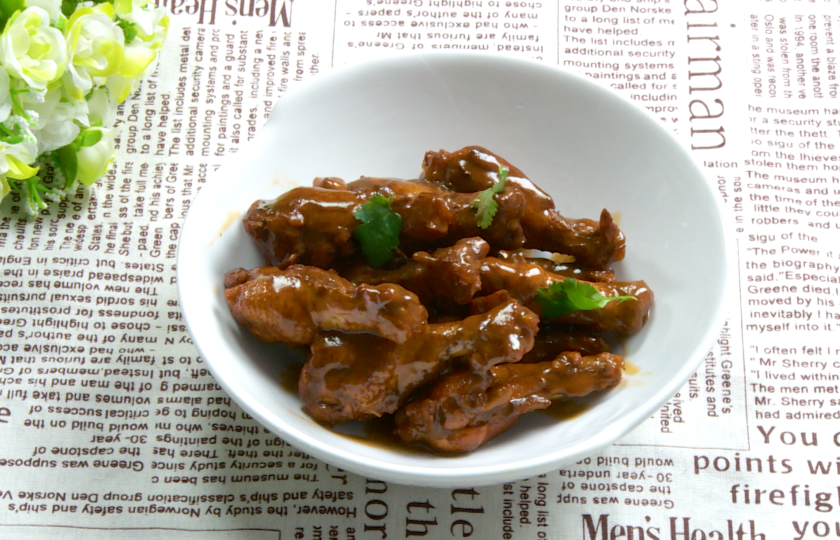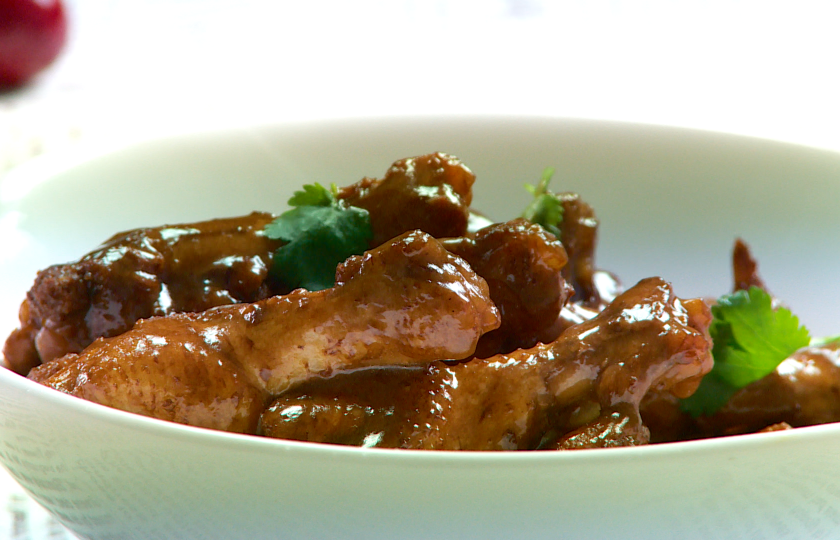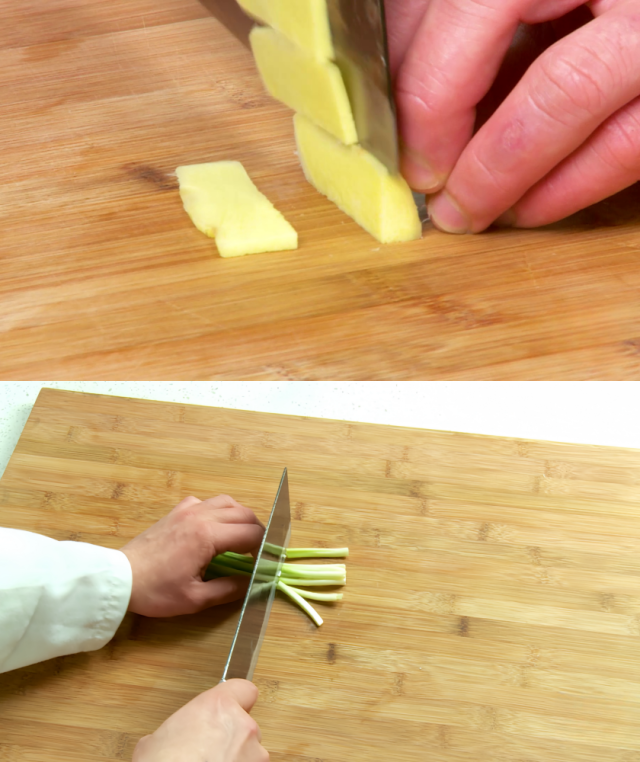Braised Chicken Leg


Don't know what to eat? Try braised chicken legs. Fresh chicken leg meat, braised and flavorful, especially goes well with rice. The ingredients are easy to buy and the steps are simple. After being cooked, it is crispy on the outside and tender on the inside. Easily make a delicious meal.
Required raw materials and substitutes
Main ingredients
Chicken legs: The meat is firm and tender. It is the core ingredient of the dish and has a rich flavor.
Accessories
Ginger: Cut into large slices to remove fishy smell and enhance fragrance, helping to enhance the aroma of the dish.
Scallion white: Cut into sections and stir-fry together to make the fragrance more intense and enrich the taste levels.
Bay leaves: Add a unique bay leaf aroma to make the dish more unique in flavor.
Star anise: Impart a rich anise flavor and make the taste more mellow.
Cinnamon: Bring a mellow cinnamon aroma and enrich the overall flavor.
Rock sugar: Play a role in enhancing color and adding sweetness, making the dish attractive in color and more layered in taste.
Seasonings
Oil: Used for frying chicken legs and stir-frying spices to make the ingredients better heated and fused.
Soy sauce: For coloring and seasoning, adding salty fragrance and color to highlight the flavor of the dish.
Starch water: Used for thickening the sauce to make the soup thicker and better stick to the chicken legs.
Substitutes
Chicken legs: Chicken drumettes and others can be substituted. The taste is similar but the shape is different. They are equally delicious.
Bay leaves: Tsaoko cardamom can be substituted. The fragrance is different and can bring a different spicy flavor.
Star anise: Fennel can be replaced. It has a unique aroma and will bring new flavor characteristics to the dish.
Cinnamon bark: Bay leaves and cinnamon bark can be substituted. The fragrance is close but slightly different and can enrich the taste.
Rock sugar: White granulated sugar can be substituted. The functions are similar and mainly play a role in seasoning and coloring.
Soy sauce: A mixture of light soy sauce and dark soy sauce can be substituted. After being proportioned in a certain way, a similar seasoning and coloring effect can be achieved.
Starch water: Lotus root starch can be substituted. It has a fine texture and has a different taste and appearance effect after thickening.

What size of chicken leg is better to choose?
For braising, the most suitable chicken leg is about 200-250 grams. Generally, the medium-sized chicken legs marked in supermarkets are fine.
Choosing chicken legs of this size can ensure that the meat is tender and juicy. It will not be undercooked inside due to being too large, nor will it be tough in taste due to being too small.
When purchasing, pay attention to choosing those with shiny skin and firm meat. When pressed with fingers, it should be elastic. Do not choose those that are yellowish or have an abnormal smell. If the bought chicken legs are relatively large, the simmering time can be appropriately extended by 5-8 minutes to ensure that the chicken legs are completely cooked and flavorful.
What are the difficulties for beginners in making this dish?
For beginners, the biggest difficulties in making braised chicken legs are controlling the heat and seasoning.
In terms of heat control, when frying chicken legs, it is easy to over-fry them, resulting in burnt skin, or if the fire is too small, it will cause sticking. The correct way is to use medium heat. When the oil temperature is 70% hot, put in the chicken legs and fry until the surface is golden brown before taking them out.
The most common mistakes made during simmering are using too high a heat or improper time control, resulting in the soup drying up before the chicken legs are fully cooked. It is recommended to strictly control it to a low heat for 20 minutes.
In terms of seasoning, beginners often make the dish too bland or too salty. The key is to taste the saltiness of the soup after adding soy sauce. If it is bland, you can appropriately add 1-2 milliliters of soy sauce.
Finally, when thickening the sauce, pay attention that starch water should be added in 2-3 times. After each addition, stir quickly so that the soup will be evenly thickened and not clumped.
Storage and reheating
The simplest storage method for braised chicken legs is to put them in a sealed fresh-keeping box and refrigerate them together with the soup for 2-3 days. Frozen, they can be stored for one month. When reheating, refrigerated chicken legs can be directly heated over low heat for 2 minutes and then eaten. Frozen ones should be thawed in the refrigerator one night in advance and reheated the next day for a more flavorful taste.
When storing, it is best to divide the chicken legs into small portions, 2-3 in a box, so that there will be no waste each time they are taken. When heating, a little water can be added to prevent the chicken legs from being too dry. After thickening the soup, the taste will be better. Especially in summer, it is recommended to finish eating within 3 days. Beyond that time, they are prone to spoilage.
Heated chicken legs should be eaten up at one time. The remaining ones are not recommended to be put back in the refrigerator. Heating in a microwave oven is also possible. Heat on medium heat for 1 minute and then turn over and heat for 30 seconds. In this way, the chicken will not be too old and the soup can still remain thick.
INGREDIENTS
Main Ingredients
-
·10 pieces chicken legs
Additional Ingredients
-
·0.7 oz (20 g) Ginger
-
·0.7 oz (20 g) Green onions (white part)
-
·4 leaves Bay leaves
-
·2 pieces Star anise
-
·2 small sticks Cinnamon stick
-
·0.35 oz (10 g) Rock sugar
Seasonings
-
·2 tbsp (30 ml) Oil
-
·2 tsp (10 ml) Soy sauce
-
·A small amount Cornstarch slurry (water + cornstarch)
COOKING STEP
Step 1
Cut 0.7 oz (20g) ginger into large slices and 0.7 oz (20g) white scallion into sections for later use.

Step 2
Pour 0.5 fl oz (15ml) oil into the pot and heat it. Then put 10 chicken legs into the pot.

Step 3
Stir-fry until the skin of the chicken legs turns slightly yellow and then put them in a plate.

Step 4
Start a new pot, pour another 0.5 fl oz (15ml) oil. Then add 4 pieces of bay leaves, 2 star anise, 2 pieces of cinnamon, ginger slices and scallion sections and stir-fry until the fragrance comes out.

Step 5
Subsequently add 2 tsp (10g) rock sugar and stir evenly to make the rock sugar melt and coat the ingredients.

Step 6
Add 0.33 fl oz (10ml) soy sauce, 13.5 fl oz (400ml) clear water and 2 tsp salt.

Step 7
Pour the chicken legs that were taken out into the pot, cover the pot with a lid. First boil it over high heat, then turn to low heat and simmer for 20 minutes.

Step 8
When the water in the pot gradually dries up, add a little starch water.

Step 9
Continue to simmer until the soup becomes thick and then it can be taken out of the pot and served on a plate.

More recipes worth trying
Delicious Homemade Braised Chicken Wings
Recipe variations
If you want to change up the braised chicken legs, you can do this:
Add fruits and vegetables:
Cut some carrot chunks and put them in the pot with the chicken legs and add water to stew. When the carrots are stewed until soft, they are sweet, have a nice color and are more nutritious.
Add some pineapple chunks before taking out of the pot. The sweet and sour taste immediately cuts the oiliness of the chicken legs. The fruity aroma mixed with the meaty aroma is very delicious.
Change the taste:
Put less cinnamon and star anise. After adding rock sugar, pour in some teriyaki sauce. Then the chicken legs will have the sweet and salty taste of teriyaki. Sprinkle some white sesame seeds before taking out of the pot. It looks good and tastes good.
When stir-frying the spices, add some curry powder. The whole dish will immediately have a curry fragrance and taste different from usual. Those who love curry flavor will definitely like it.
Change the tools and methods:
Put the chicken legs and seasonings all in a pressure cooker. After the steam comes up, pressure cook for about 10 minutes. Then pour it back into the pot and thicken the sauce with starch water. It cooks quickly and the meat is still tender.
First, fry the chicken legs until yellow and put them in the oven. Bake at 200 degrees for 10 minutes. Take them out and brush on the sauce prepared with spices, rock sugar and soy sauce. Then bake for 10 to 15 minutes. Brush the sauce several times. The baked ones have a crispy skin and are tender and juicy inside.
Eating suggestions
Pairing with staple food:
Pairing with a bowl of white rice is most appropriate. Using the chicken leg soup to mix with rice can make the rice fully absorb the meaty aroma and soy sauce aroma, doubling the taste.
Eating temperature:
The optimal eating temperature for braised chicken legs is between 60-70 degrees. At this temperature, the deliciousness of chicken and the richness of the sauce can be perfectly presented, allowing the taste buds to fully experience the deliciousness.
Eating method:
It is recommended to tear the chicken legs into small pieces before eating. In this way, the chicken can be better seasoned and it is easier to pick up with chopsticks.
Utilization of soup:
It is best to leave more soup. The soup can be used to mix with green vegetables to give the green vegetables a meaty aroma; or it can be used to cook noodles so that the noodles are covered with rich soup and the deliciousness is upgraded.
FAQs:
The heat during cooking is very important. First, fry them over high heat until the surface is golden brown, and then turn to low heat and simmer for about 20 minutes. During this period, turn the chicken legs from time to time to make each part evenly flavored. Adding spices such as star anise and cinnamon can make the chicken legs more layered. Finally, add an appropriate amount of dark soy sauce for coloring when thickening the sauce.
When stewing chicken legs, let the soup cover half of the chicken legs so that it is heated evenly when cooked. If you want the chicken legs to have a softer and tender texture, put in a slice of ginger and two slices of lemon, and the chicken will be more tender and smooth. Finally, cover and simmer for 5 minutes. The finished product will definitely be very flavorful.
The advantage of earthenware pots is that they heat evenly and can make chicken legs stew more flavorful. Especially when simmering over low heat, the aroma of soup and meat can be locked in. For example, chicken legs stewed in an earthenware pot for an hour will have particularly tender meat and will not be as easy to overcook as with other pots.
Although cast iron pots are heavier, they are durable and are especially suitable for the cooking method of frying first and then stewing. When frying chicken legs in a cast iron pot, the skin will be particularly crispy. After turning to low heat and stewing, the wok qi will make the chicken legs more fragrant. When cleaning, just rinse with hot water and then apply a layer of oil to prevent rust.
After covering the pot, do not open it for the first 15 minutes to let the chicken legs fully absorb the flavor in the soup. After that, turn them over once every 10 minutes. This can ensure even heating without damaging the chicken skin. If simmering by turning from high heat to low heat, the first turning should be done when turning to low heat.
Excessive turning will cause damage to the chicken skin and loss of soup, affecting the final taste. Especially when simmering in an earthenware pot, the heat is evenly distributed by itself, and there is no need to turn frequently.

















